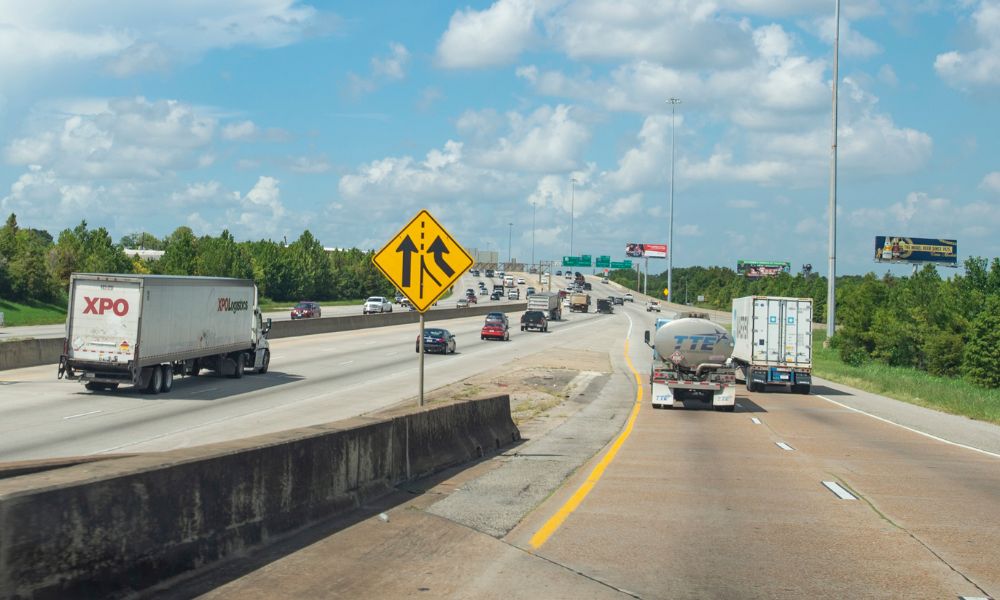Let J. J. Keller help with your California authority!
California Packages for CDL and Non-CDL Carriers includes:
- California Identification Number
- California Motor Carrier Permit (MCP)
- California Employer Pull Notice (EPN) - CDL Carriers Only
Let J. J. Keller help with your California authority!
California Packages for CDL and Non-CDL Carriers includes:

Many states have requirements for carriers that intend to engage in intrastate commerce within their respective state. Intrastate transportation is defined simply as not interstate. The movement is from one point within the state to another location in the state. States vary considerably in their requirements for intrastate carriers both in the types of authority that is required and how strictly the rules are enforced. California has many details to their rules and the state is strict in its enforcement. Below are the requirements regarding California for-hire and private carrier authorities.
Intrastate California household goods and passenger carriers are required to have an active CPUC permit issued by the California Public Utilities Commission (PUC), and display on the power unit the identification number (Cal-T number: the CPUC permit number) issued by the California PUC. There is a one-time fee and the carrier must provide a yearly equipment list and proof of insurance.
All other intrastate property carriers, including private carriers, are regulated by the California Department of Motor Vehicles (DMV) and must have a Motor Carrier Permit (MCP) issued by the DMV. As it pertains to MCP, a commercial motor vehicle is defined in Section 34500 of the California Vehicle Code (CVC) and generally includes:
There are exclusions from the definition of a CMV for certain: household goods carriers and vehicles, non-commercial pick-up trucks, medium weight rentals, RVs, and related to passenger carrying operations.
Intrastate carriers (other than household good carriers) must obtain and display a California Identification (CA) number issued by the California Highway Patrol (CHP). In order to obtain a CA number, a motor carrier must first obtain a USDOT number from the Federal Motor Carrier Safety Administration (FMCSA). The motor carrier's USDOT number must be provided as part of the CA number application process. California also requires interstate carriers that are both delivering and picking up loads in California to obtain a CA number from the California Highway Patrol. However, if the carrier displays a valid USDOT number, the CA number does not also have to be displayed.
The required levels of liability insurance vary from $300,000 to $500,000 combined single limit depending on the type of vehicle and property being transported. Proof of insurance must be submitted on either a Certificate of Insurance (MC 65 M) or a Certificate of Self Insurance (MC 131 M).
California carriers that use drivers that operate equipment that require a CDL and are subject to Controlled Substance and Alcohol Testing (CSAT), must self-cerify when applying.
Carriers that have terminals, garages, shops, maintenance, dispatch operations, or cross-dock in California are required to enroll in the Employer Pull Notice Program (EPN). The program's purpose is to provide carriers a way to promote driver safety by an ongoing review of the driver's records.
California intrastate carriers that also engage in interstate motor carriage must comply with requirements for initial application for an MCP for the intrastate authority and submit any necessary fees. Interstate carriers are issued a non-expiring MCP.
Intrastate vehicles that are included in the UCR registration are not subject to annual renewal of the intrastate authority, however a CA number is still required. Vehicles that are used solely in intrastate operations and not included in the vehilce count under the UCR annual submission are subject to annual renewal of the MCP.
In addition to the penalties above, the Department of Motor Vehicles can suspend a Motor Carrier Permit due to:
California requires carriers operating within the state to register with the state. This state specific registration is referred to as having “intrastate authority.”
Yes, an independent carrier can obtain their own loads from shippers, brokers, or load boards. To operate in California, the new carrier will also need to obtain a CA number and an MCP number.
Yes, carriers can have a brokerage division instead of leasing-on drivers. To do so, the carrier needs to have brokerage authority, obtain a surety bond, and follow the FMCSA’s brokerage regulations. The brokering carrier needs to ensure that any independent operation or driver used passes the ABC test.
The California motor carrier permit (MCP) is issued by the California Department of Motor Vehicles (DMV). The DMV is responsible for collecting fees, ensuring that motor carriers of property follow the liability and workers compensation insurance requirements, and are enrolled in the Employer Pull Notice (EPN) Program. The issued MCP number designates that the carrier is allowed or “permitted” to operate in the state.
The DMV issues the MCP granting operating authority to motor carriers of property on California highways. Trucks with a gross vehicle weight rating (GVWR) of 10,001 pounds or more and other motor vehicles used to transport property for compensation are required to obtain an MCP. Out-of-state motor carrier delivering and picking up loads must also obtain an MCP.
To obtain an MCP, the carrier must first obtain a CA number. The carrier needs to demonstrate financial responsibility and have proof of workers compensation (or be issued and provide a written exemption). A valid requester code, if needed, for the Employer Pull Notice (EPN) program. If required, the applicant needs to show enrollment in a controlled substances and alcohol testing (CSAT) program. In addition to all the above, the permit is requested on a form MC 706 M. It is not uncommon for carriers to ask for help from a third party, such as J. J. Keller’s compliance specialists, to assist in requesting the Motor Carrier Permit.
The Motor Carrier Permit (MCP) requires a CA number, issued by the California Highway Patrol (CHP). The CHP regulates compliance and the safe operation of vehicles through the Basic Inspection of Terminals (BIT) Program, a Controlled Substance and Alcohol Testing (CSAT) Program, and roadside enforcement.
The CA number is issued by the California Highway Patrol (CHP). Applicants must complete a Motor Carrier Profile (CHP 362). The Motor Carrier Profile contains seven parts on five pages (with instructions). It is not uncommon for carriers to ask for help from a third party, such as J. J. Keller’s compliance specialists, to assist in requesting the CA Number. Call 888-473-4638 Today!
Both are needed. Carriers are regulated by the California Department of Motor Vehicles (DMV) and the California Highway Patrol (CHP). Rather than share a number, each agency issues their own identification number. A carrier desiring an MCP must first have a CA number.
The California Employer Pull Notice (EPN) program enables commercial and government organizations to monitor the driving records of employees who drive for them. Each carrier that is enrolled is assigned n requester code. This code is added to the applicable employee’s driver license record.
Carrier’s must enroll any driver employed to operate a vehicle that:
Requires a Class A or Class B license;
Requires a Class C license with an endorsement for, hazardous materials, passengers, or tank;
With a seating capacity of 10 or fewer people (including the driver) for compensation by a charter–party passenger carrier; or
The driver works for a passenger stage corporation with a certificate of public convenience and necessity, or permit issued by the California Public Utilities Commission (CPUC).

Article covers what the U.S. Court of Appeals decision means and how it affects indpendent contracors/owner-operators in CA.
Talk with a Compliance Specialist today at: 888-601-2017 or fill out the form and we'll contact you.
Thank You!
Thank you for your interest! A Compliance Specialist will contact you soon regarding your request or you can contact us at 888-601-2017
Sorry, there was an issue in submitting the form. Please resubmit your information.